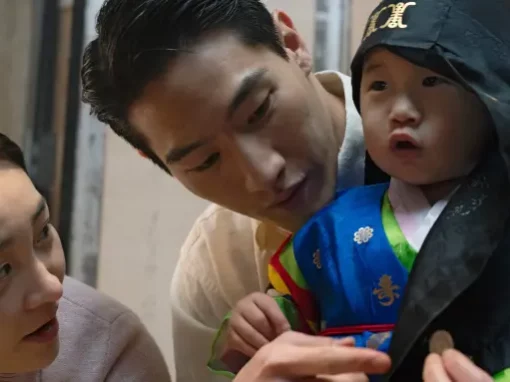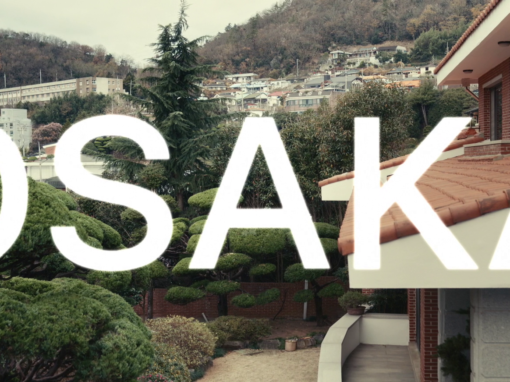Christina Yi on the fraught history of the term, “Zainichi” and its inadequacies
Min Jin Lee’s Pachinko is the first English-language novel to depict the lives of zainichi (lit. “residing in Japan”; resident) Koreans. As a general reader, I was swept away by the remarkable imaginative scope of the work, and appreciated very much how the precision of Lee’s prose never failed to limn its characters with compassion and grace. As an academic whose research centers on Japanese-language literature by Koreans, I was excited to see so many important issues central to zainichifiction – language politics as refracted through naming practices and titles, the impossibility of demarcating a clear break from the “colonial” to the “postcolonial,” raced and gendered labor relations, Cold War politics, and more – also present in Pachinko, in ways that never felt reductive or obtrusive but were rather intimately linked to the characters’ own understanding of themselves.
The question of how to best translate the ironies of “zainichi” – where one is marked as in Japan, but not of Japan – is one that academics too struggle to answer.
Notably, the word zainichi is mentioned only once within the novel. In the Acknowledgements section, Lee defines zainichi as “a term used often to describe Korean Japanese people who were either migrants from the colonial era or their descendants,” but then notes the following: “Some Koreans in Japan do not wish to be called Zainichi Korean because the term means literally ‘foreign resident staying in Japan,’ which makes no sense since there are often third, fourth, and fifth surviving generations of Koreans in Japan” (Lee 481).
The question of how to best translate the ironies of “zainichi” – where one is marked as in Japan, but not of Japan – is one that academics too struggle to answer. Although the ethnic Korean community in Japan can be traced back to the Japanese colonization of Korea (1910–1945), the word itself came to be widely used only after 1945, after Japan’s unconditional surrender to the Allied Powers and uniform loss of its colonies. Before then, Koreans had been able to travel back and forth between Korea and Japan, if not with total freedom (as travel permits and other measures were employed to police migrant populations).
The majority of Koreans in Japan were repatriated to Korea upon Korea’s liberation, but roughly 600,000 individuals remained by the late 1940s, for a number of different reasons: some were unable to return due to economic or other constraints, some had grave concerns about the political conditions on the peninsula, others wished to maintain their livelihoods. Many assumed that their residence in Japan would be a temporary one – which is one of the reasons why the word zainichi came to be used in reference to the Korean population. However, the “temporary” nature of zainichi status changed dramatically with the implementation of the San Francisco Peace Treaty in 1952. While Koreans technically had Japanese (second-class) citizenship under the Japanese empire, the San Francisco Peace Treaty stripped all former colonized subjects of their Japanese citizenship. Because Japan did not have diplomatic relations with either North Korea or South Korea at the time, Koreans in Japan were made stateless.
Solomon never reveals what he thinks of that particular term. Then again, why should he? The task of understanding, Pachinko suggests, is on us; otherwise, history fails.
The translation of “Korea” also became fissured in this process. During the colonial period, the Japanese word commonly used to refer to Korea was Chōsen. By 1948, however, the peninsula had been partitioned into two mutually hostile states, the Republic of Korea (commonly referred to as Kankoku in Japan) and the Democratic People’s Republic of Korea (commonly referred to as Kita Chōsen, or North Korea, in Japan). In the 1940s and 1950s, the default term to describe Koreans in Japan was zainichi Chōsenjin (lit. “person of Chōsen residing in Japan”). With the calcification of Cold War tensions in East Asia, however, Kankoku gradually replaced Chōsen in contemporary Japanese discourse as the general word for “Korea” (although it technically indicates only the South), and Chōsen became heavily associated with the North. Some zainichi Koreans who self-identify as North Korean will therefore call themselves zainichi Chōsenjin – but things are complicated by the fact that the term is also used by those who wish to protest the partitioning of the peninsula, and/or those who locate their ethnic origins in Korea pre-1945. After South Korea and Japan signed a normalization treaty in 1965, some Koreans in Japan were able to obtain South Korean passports; however, there are still some who remain effectively stateless, as they do not possess a nationality recognized by the Japanese government.
I’ve now spent three paragraphs outlining the complicated fractures in the phrase “Korean in Japan” – but I’ve only scratched the surface! This may perhaps help explain why Min Jin Lee chose not to frame Pachinko through the word zainichi: as the novel demonstrates, the story (or rather, the manifold interlocking stories) of Koreans in Japan cannot easily be contained within a single word, place, time, or narrative space.
Towards the end of the novel, it is a Japanese character who finally voices the terrible irony of “temporary” resident Korean status: “The zainichi can’t leave, nee?” (467) This line of dialogue is spoken to Solomon, a third-generation zainichi Korean who does, in fact, physically leave Japan (using his South Korean passport, to study in New York) – only to return again, to a family and language and history and heritage that bind him and bolster him in ways not reducible to his legal status. Solomon never reveals what he thinks of that particular term. Then again, why should he? The task of understanding, Pachinko suggests, is on us; otherwise, history fails.
Christina Yi is Associate Professor of Asian Studies at the University of British Columbia.
Originally published on the Columbia University Press Blog on September 7, 2018:


